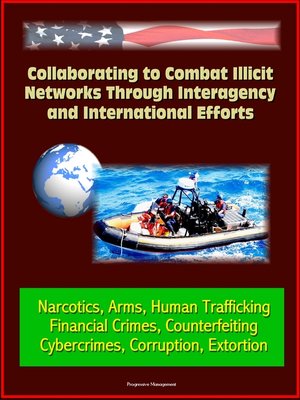Collaborating to Combat Illicit Networks Through Interagency and International Efforts
ebook ∣ Narcotics, Arms, Human Trafficking, Financial Crimes, Counterfeiting, Cybercrimes, Corruption, Extortion
By Progressive Management

Sign up to save your library
With an OverDrive account, you can save your favorite libraries for at-a-glance information about availability. Find out more about OverDrive accounts.
Find this title in Libby, the library reading app by OverDrive.



Search for a digital library with this title
Title found at these libraries:
| Loading... |
Professionally converted for accurate flowing-text e-book format reproduction, this study examines collaborative efforts among U.S. agencies, partner nations, and multilateral organizations to address the hybrid threats posed by illicit networks through the diplomatic, development, and defense lenses of national security in the Western Hemisphere. The resourcefulness, adaptability, impunity, and ability of illicit networks to circumvent countermeasures make them a formidable foe for governments. Since illicit actors have expanded their activities throughout the global commons, in the air, land, sea, and cyberspace domains, nations must devise comprehensive and multidimensional strategies and policies to combat the transnational threats posed by these illicit networks.
The initiatives discussed here focus on programs in the Western Hemisphere to tackle the converging threat of transnational organized crime (TOC) and other illicit networks, undertaken by the United Nations Office on Drugs and Crime (UNODC), Organization of American States (OAS), Central American Regional Security Initiative (CARSI), and U.S. Southern Command's Joint Interagency Task Force-South (JIATAF-South). Each of these endeavors represents models for collaborations that require political will, institutional capacity, mechanisms, resources, and measures of effectiveness for success. These instructive examples of interagency and international collaboration in the Americas underscore the continued need to foster communities of interest to comprehend illicit networks and devise more effective strategies to counter them as they further evolve and threaten the national security of the United States and its allies.






